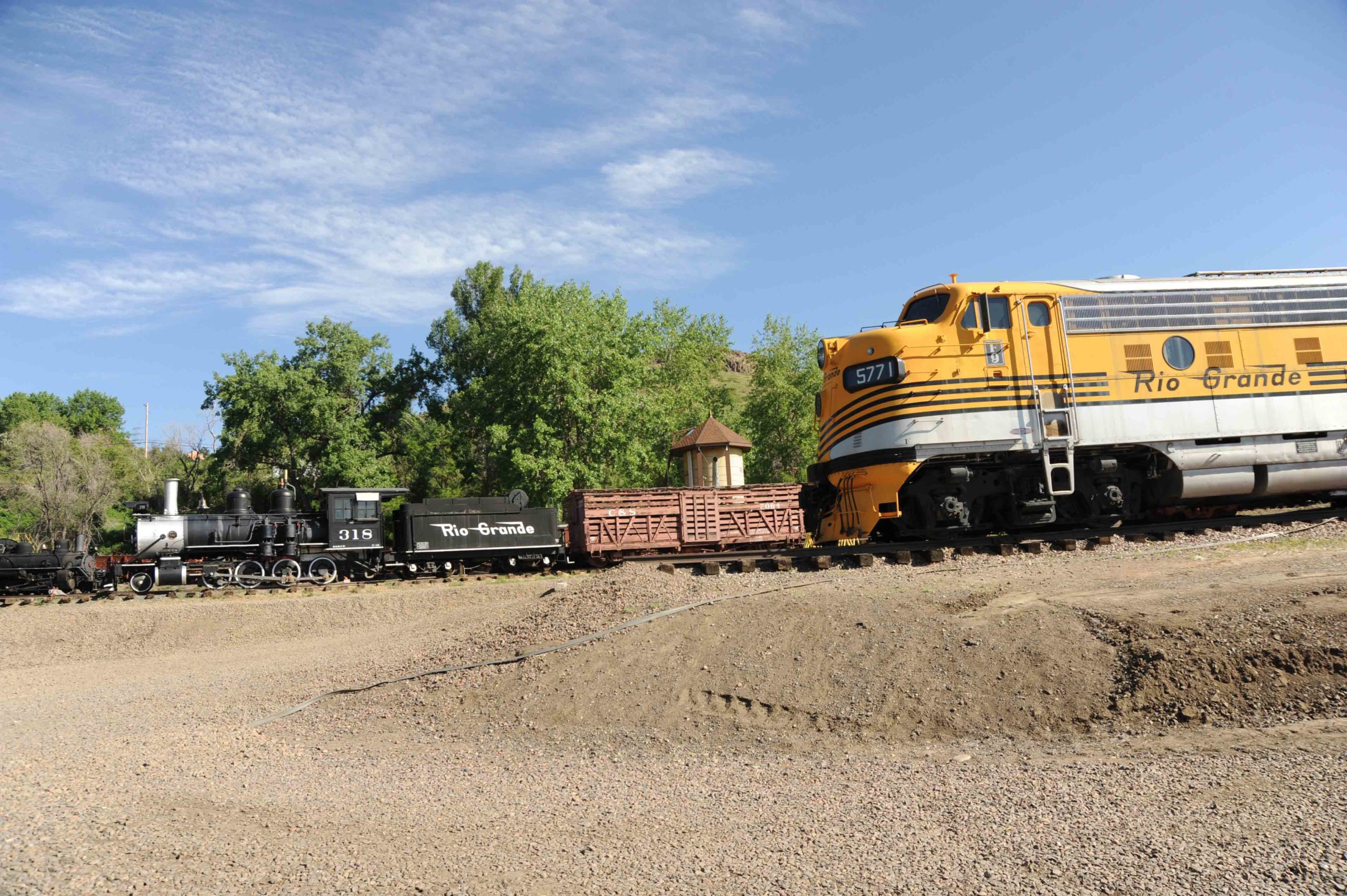In Sacramento, the California State Railroad Museum created an exhibit called Death Valley Scotty’s Race for Glory. The centerpiece is Santa Fe 2-6-2 No. 1010, which was one of the 19 locomotives that was part of the legendary Coyote Special in 1905. Walter Scott, also known as Death Valley Scotty, chartered a special Santa Fe train from Los Angeles to Chicago to break the cross-country rail speed record. The trip was completed in 44 hours and 54 minutes, breaking the previous record of just under 53 hours. No. 1010 pulled the train from Needles, Calif. to Seligman, Ariz. The exhibit details the myth and reality of Scotty’s run and examined the marketing of the West by Santa Fe in the first half of the 20th century.
In the spring Museum Director Ty Smith turned the museum into a classroom by teaching a course in museum exhibitions. Offered as part of California State University Sacramento’s Public History Master’s program, 16 graduate students conceived, researched, wrote, and designed an exhibit for the museum. The product of this course, Farm to Fork: A Public History, explores how the railroad and the ability to market California’s agricultural bounty to the nation led to the second California Gold Rush. The student-led exhibit is now on permanent display at the museum.
Museum Projects and Communications Manager Lori Hanley said the biggest accomplishment in 2018 was the transfer of two former Southern Pacific Sacramento Shop buildings to state ownership. Museum personnel have been performing repair, maintenance, preservation, and restoration functions in the shops for nearly two decades. The formal transfer of the property allows the museum and the California State Railroad Museum Foundation to move forward to preserve and restore the buildings.
For 2018, CSRM attendance was 328,721, a 14 percent increase over 2017. In 2018, museum staff focused on developing a renewal program for the museum. This plan will be put into action in 2019-2020 and will transform many of the museum’s permanent exhibits. Hanley said many permanent exhibits are in their original state from when the museum was established, or pieces were added through the years. The renewal program looked at the museum as a whole, and will do a reset on the look and feel of exhibits, adding in stories of the people who did the work for and on railroads, and creating exhibits that are more interactive and technologically advanced.
The museum will be hosting a variety of events to commemorate the 150th anniversary of the Transcontinental Railroad., including a community day on May 8 (the date which Sacramento celebrated), a gala in the museum May 11, a speaker’s series, revamped permanent exhibits, and, for the first time, the display of Theodore Judah’s 65-foot hand-drawn survey map of the planned route through the Sierra Nevada Mountains. For more information, visit railroad150.org.
The Colorado Museum at Golden will celebrate its 60th anniversary in 2019. Museum Communications and Marketing Manager Chad Knasinski said the museum is developing special events to mark the occasion in addition to Thomas The Tank Engine and Polar Express events, both of which saw increases in attendance in 2018. Since the Great Recession in 2008, museum attendance has been steadily climbing, Knasinski said. The Polar Express now brings in about 14,000 visitors, and has become the “crown jewel” of CSRM events, he said. “We put the tickets on sale in August and we sell out in hours; that’s how popular it is.”
A 60th anniversary gala will be held in July, and Rio Grande Southern 4-6-0 No. 20 is expected to arrive at the museum from rebuilding at the Strasburg Rail Road shop in Pennsylvania this summer.
Last year, Rio Grande SD40T-2 Tunnel Motor No. 5401 was moved into the museum by laying tracks down city streets, which drew media coverage in the Denver area. Knasinski said that generated a lot of foot traffic from people that wanted to see the locomotive.
In 2019 the museum hopes to move forward on protecting its outdoor exhibits. It is funding construction of overhangs to protect some business and passenger cars. Restoration will also proceed with cleaning, painting and restoration of several museum pieces, Knasinski said.
For more information go to http://coloradorailroadmuseum.org.















Amazon customers, AMAZONSMILE.
It’s great to visit and read about railroad museum that share success stories. The “major derailment” that occured at the Indiana Railroad Museum should be a lesson to all museums across the country to Stop, Look & Listen to the problems that plagged this museum and led to it’s eviction off the property.
Any museum(s) in danger of closing as a result of facing serious management and/or financal problems or the continued loss of paying members and visitors alike should waste no time to consider donating their equipment to soundly managed and well financed museums to insure that not so much as one piece of it won’t end up meeting the scrapper’s torch before it’s too late to save forever what had become a classic example of railroadngs past.
Not only will these museums be rewarded with new items to add to their collections but they’ll be more than happy to receive and welcome new dedicated members to their fraternity at the same time. It’s a win win situation for all to enjoy!